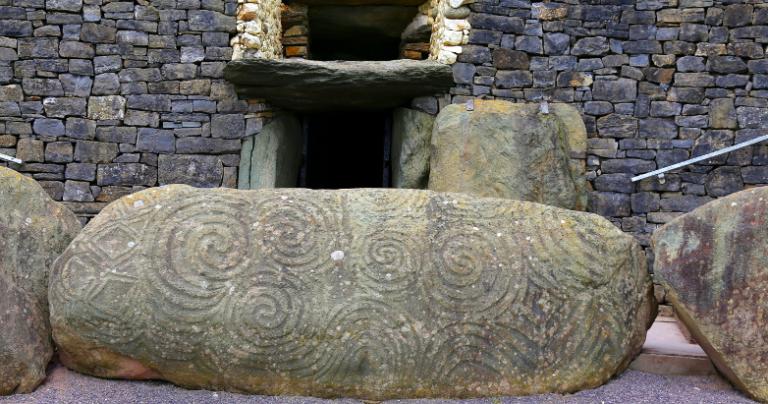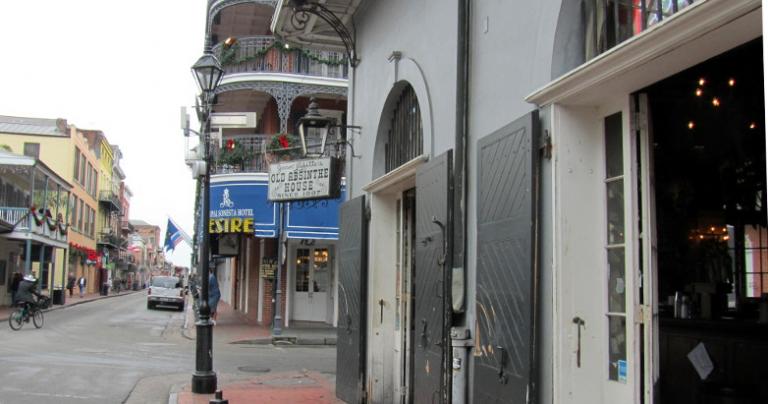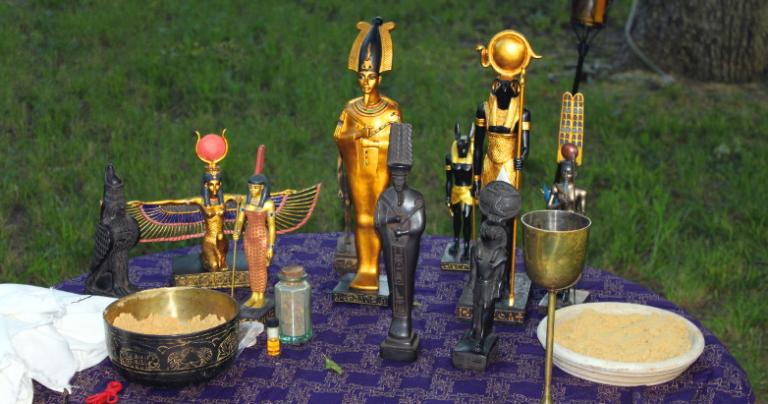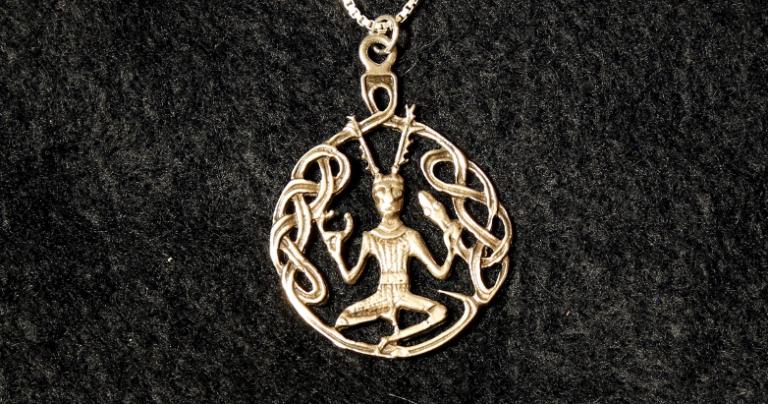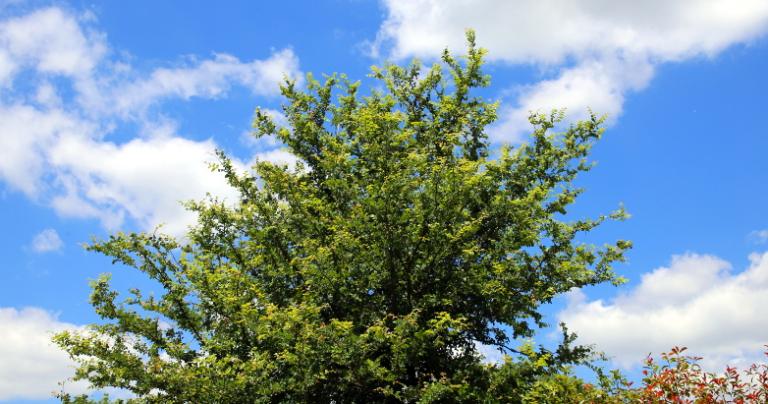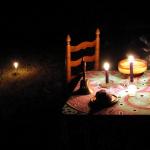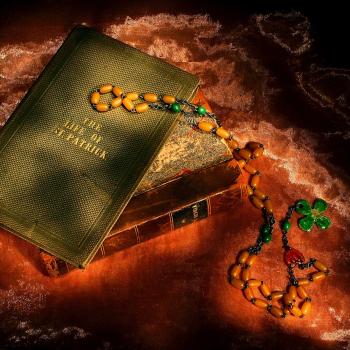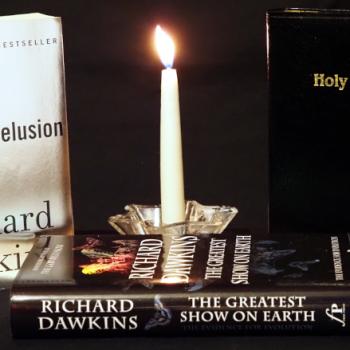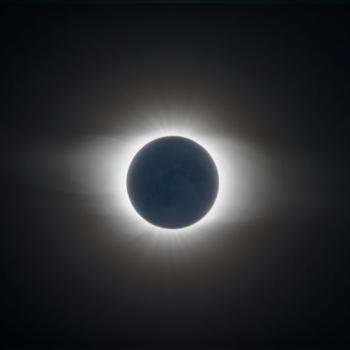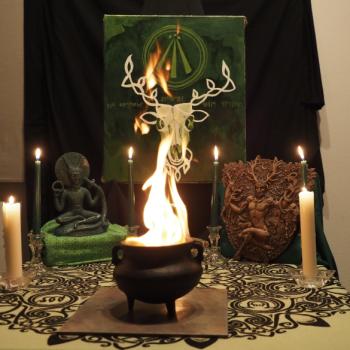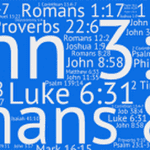Last month Jason Mankey had a post titled When You Know the Magick & Witchcraft Are Real. I liked it and decided to do my own. But instead of talking in general terms, I want to talk about the key events on my Pagan journey that progressively increased my confidence to the point that I’ve changed my foundational assumptions about the world and the way it works.
I know what I write about on this blog is real. Here’s how.
How do we know what we know?
There’s a whole branch of philosophy called epistemology that’s dedicated to the question of how we know what we know. But I’m not a philosopher, I’m a Druid and a priest. Perhaps more importantly, I’m an engineer. While I’m curious about various laws and theories, what I’m mainly interested in is “does it work?” and “is it helpful?”
Many of our beliefs about what is and isn’t possible have materialist assumptions that ignore or dismiss spiritual experiences that are undeniably real. And so instead of exploring them and seeing where they lead, we rationalize them away so we can pretend to be rational and sophisticated, even though rational and sophisticated beliefs have gotten our mainstream society into the mess it’s in.
These events are absolutely, undeniably real. My interpretations of them are subjective and because I am an imperfect human, they are ultimately imperfect. So integrity demands that I hold them loosely and always remain open to new experiences and new interpretations. Integrity also demands that I respect different interpretations from different people, even if I disagree with them.
But these experiences and the beliefs that flow from them are among the most meaningful and helpful parts of my life. My life is better because of them, both in the spiritual realm and in the way I deal with the ordinary challenges of life. And so I treat them as though they’re absolutely true, even though I can never be entirely sure.
1. My introduction to Paganism.
It was 1993 in New Orleans. I made a trip to Mardi Gras with some early on-line friends, one of whom was a Wiccan. He explained that his religion saw Nature as sacred, the Divine as both female and male, and magic as real.
And something inside me clicked.
The religion of my childhood taught that Nature was fallen, that God was an angry old man, and that magic was simultaneously unreal and “of the devil.” None of that ever seemed right to me. When my friend talked about Wicca, both my logic and my intuition said “this may not be exactly right, but it’s more right than anything I’ve heard so far.”
And so I started studying Wicca.
2. My first magical blowback
I did what all baby witches do – I started doing spells. I copied some out of Scott Cunningham books and wrote others myself. They worked, but there were no earth-shattering results.
Then I worked a spell to bring me something I very much wanted, but something very shallow, and in a win-lose situation. No, I won’t tell you what it was. But if I got what I wanted, someone else would lose out.
It worked, brilliantly. I was thrilled. But the next time I stepped into that situation, it blew up in my face. Everything I had gained was wiped out, and more.
I learned not to work magic for trivial purposes, no matter how badly I wanted something. And I was absolutely convinced the magic was real.
3. My epiphany
I spent eight years dabbling with Wicca and basically went nowhere. On Thanksgiving night 2001 I got a call from a close friend who had recently had a spiritual encounter. We talked, and I speculated on what it might have been.
The next morning I came to a clear and unpleasant realization: I didn’t know what the hell I was talking about. And in that moment I heard an inaudible but very loud voice screaming “GET SERIOUS OR MOVE ON!”
I knew the dabbling had to end. And I knew I had never moved beyond dabbling because I didn’t have a religious foundation. I had rejected the fundamentalism of my childhood, but I had replaced it with a vague deistic universalism that didn’t give me anything to build on. That had to change.
And it did.
4. My first Pagan initiation
November 2003. Several members of Denton CUUPS had asked for an initiation. Myself and two senior members put together a generic Pagan initiation ceremony, and we did it first for ourselves.
In the weeks leading up to the ritual, I was inundated with calls to turn back. I kept channel-surfing onto TV preachers talking about how their way was the only way. I visited some wealthy friends and felt like I should be spending my time making money. And I came across a Wiccan initiation that included the line:
It is better to throw thyself upon this sacred blade and perish now than to essay the trials with fear in thy heart.
But the real challenge isn’t to enter the circle with no fear. The challenge is to have the courage to enter in spite of your fears.
We did the ritual. And when the priestess drew a sacred symbol on my forehead and consecrated me to this path, it felt right, and all those fears sank into the ground. They didn’t go away forever, but the experience was strong enough to begin crowding them out of my soul.
5. Experiencing the Gods as individuals
June 2004 and our first Egyptian Summer Solstice ritual. I was still working on a model of the Divine somewhere in between duotheism and pantheism that often expressed itself as soft polytheism. This ritual was an important thing for us, and so we all agreed to do nine nights of meditation, each on one member of the Ennead.
As I moved through the meditations, I found my experience of Shu was different from my experience of Tefnut. My experience of Geb was different from my experience of Nut. My experience of Isis was different from my experience of Osiris, and both were very different from my experience of Set.
And it occurred to me that if my experiences of these Gods were different, I should conceive of Them and interact with Them as though They were distinct, individual beings, even though I couldn’t be sure one way or another.
This was the beginning of my polytheism.
6. Rediscovering Cernunnos
A friend – the same priestess who facilitated my first initiation – went to England. I gave her some money and asked her to bring me a t-shirt. Instead, she brought back this.
We didn’t know who it was, but I started wearing it. Before long I discovered it was Cernunnos, and that the artwork comes from the Gundestrup Cauldron. All of a sudden, all those magical times I spent in the woods as a kid made sense, and I knew why I felt safe and protected. And I knew there was a reason for it all.
Shortly afterwards, I had my first ecstatic experience of Cernunnos. His being, His essence, merged with mine, at least to some degree. I was still aware of what was going on, but the presence of Another in me was strong and undeniable. Afterwards, one of the people in the ritual said she saw antlers coming out of my head.
I’ve had other similar experiences, with Cernunnos and with a few other deities (and with one non-divine or possibly semi-divine being). They’ve let me get a taste of the power and wisdom of the Gods… and they’ve reminded me of just how limited my own power and wisdom is in comparison. Sometimes They’ve spoken through me, and while Their messages are necessarily filtered through me, every time it happens someone says “I know John, and that wasn’t John.”
Cernunnos remains first among equals in my devotion, and my ecstatic experiences are the most real things I’ve ever done.
7. The green glowing bird
After that, my foundational assumptions about the world and how it works were changed forever. Magic is real, and while it cannot do the impossible, it can make the improbable more likely. The Gods are real, distinct, individual beings, who can and do communicate directly with humans. Working with and for Them hasn’t made my life easier, but it has made it far more fulfilling – I’m orders of magnitude happier now than when I began this journey in New Orleans 25 years ago.
If I needed one final confirmation, I got it early one morning in June of 2016. I always told people “don’t ever expect to see something with your physical eyes that defies the laws of physics.” And then I saw something that defies the laws of physics – a bird that was glowing green, in a way that birds just don’t do. I can’t unsee it, and I refuse to rationalize it away.
I’m still not entirely sure what that green glowing bird means (I do not think it was a message specifically for me) but any time my skeptical side starts to get out of hand, it’s there to remind me that yes, this is all very, very real.
8. Continuous confirmation
The green glowing bird is only the most obvious and literal confirmation of the reality of my Paganism. There is the series of events that led me into the service of the Morrigan. There is the magic that just needed time to work. There are my increasing experiences of the Fair Folk. I could go on and on – and I frequently do. Our mainstream world tells us these things are impossible, so it’s important to share our experiences to remind ourselves that yes, these things are very real.
Because ultimately, the greatest value of religious experiences and changed worldviews isn’t that we have them, it’s what they inspire us to do. Knowing they’re real is good. Living deeper, more meaningful, and more connected lives is better. Building the practices, traditions, and institutions that will help others who follow us on this Pagan path is better still.
I know my Paganism is real, but I do not insist you take my word for it. Instead, I encourage you to follow the path that calls to you, explore it deeply and diligently, and see where it takes you. Have your own religious and magical experiences.
And when you do, remember how we know what we know. Your first-hand experiences are undeniably real, so don’t rationalize them away. Interpret them not in the way that best fits the materialist assumptions of our mainstream society, but in the way that is most meaningful and helpful to you.
Blessings to you on your path, where ever it may take you.


